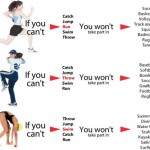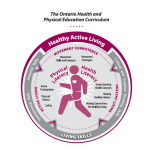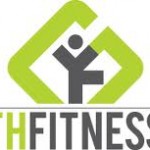 This year my Physical Education program will be brought to you by the letter ‘P‘. Play…Physical Literacy…Pedagogy…and Parent Engagement. As the new school year approaches I wanted to organize my thinking as I start planning for the year ahead…
This year my Physical Education program will be brought to you by the letter ‘P‘. Play…Physical Literacy…Pedagogy…and Parent Engagement. As the new school year approaches I wanted to organize my thinking as I start planning for the year ahead…
PLAY
Inspired in part by the PARTICIPACTION campaign Bring Back Play, I want to kick start my program this year by allowing the students to explore a unit of inquiry based around ‘Play’. What is Play? What skills can we build with Play? Do we get enough Play?
I figure if we want our kids to play more, then who better to advocate for that than the kids themselves! By teaching children about the health benefits of play, the social and emotional skills they can develop, the physical literacy skills they can build, and the brain power they can create, then they will be armed with some pretty good argument when bugging their parents to go to the park! Unless we really engage our families and communities, a couple of periods of “gym” a week simply is not enough.
Nitro-charged advocates of Play, David Kittner (@YouthFitnessGuy) – The Youth Fitness Guy and Kwarme Brown (@drkmbrown) – The Move Theory Guru, do amazing work based around the subject. The ideas they present have pushed me to think deeper and more meaningfully about the power of play within education. I was fortunate enough to attend a workshop with Kwarme at last year’s Physical Literacy Summit in Hamilton. This led to some real self-reflection and re-thinking of my teaching. A practice I recommend for all teachers!
Organizations like Participaction, Active For Life, OPHEA, and CIRA Ontario also offer an abundance of resources to help engage students, parents, and communities with Play.
PHYSICAL LITERACY
 Through Play I can design activities that will give students opportunities to develop the fundamental movement skills (FMS) that will provide them with the competence and confidence to feel the motivation to try new activities and stay more active.
Through Play I can design activities that will give students opportunities to develop the fundamental movement skills (FMS) that will provide them with the competence and confidence to feel the motivation to try new activities and stay more active.
During even a simple tag game, we can develop our dodging skills – those quick changes of speed and direction needed for any number of sports – while at the same time practicing our running, skipping, and hopping. We also get the added bonus of developing our spatial and body awareness, not to mention it’s a fun workout!
PHE Canada and the Passport For Life program is a great way to integrate physical literacy into your Physical Education program and fun way to, again, engage the students and their families. Canadian Sport For Life offer extensive resources for assessing physical literacy. The Physical Literacy Assessment for Youth (PLAY) tools, created by Dr. Dean Kriellaars (@DeanKriellaars), are excellent for determining a student’s physical literacy. OPHEA also have an excellent set FMS posters that I regularly use with students when building criteria, self/peer assessing, evaluating, and much more.
PEDAGOGY
 The work of a great Physical Educator is to then take that simple tag game, entwine curriculum expectations and help facilitate student learning. This can be done with clear learning goals, co-created criteria, purposeful questioning and feedback, effective game progressions, visible learning, and meaningful debrief and reflection…all while keeping it fun and active!
The work of a great Physical Educator is to then take that simple tag game, entwine curriculum expectations and help facilitate student learning. This can be done with clear learning goals, co-created criteria, purposeful questioning and feedback, effective game progressions, visible learning, and meaningful debrief and reflection…all while keeping it fun and active!
Through Play, I can also teach and reinforce all the important rules and expectations needed for a safe and healthy Phys Ed environment. Together with the students we can explore playground games and cooperative and team-building tasks that are purposefully designed to help the students pull out the living skills needed for a successful year.
With that same tag game we can examine stop/start signals and listening skills, game boundaries and rules, the importance of playing fairly, and problem-solving and conflict-resolution skills. Involving the students in this process in variety of ways, such as mind-mapping, exit cards, and self/peer-assessments, makes the learning much more meaningful and visible. I also recommend embedding these ideas into your daily practice so that you can constantly reinforce the criteria set. My STARS Class Assessment is one way I do this.
Parent and Community Engagement
I am exciting to be opening a new school this year, so have the opportunity to lay the foundations and build a strong program and culture that reaches out beyond the gym walls and into the community.
After initially writing this blog post I happened to then watch Dr. Bob Pangrazi’s keynote at The National PE Institute 2014 Conference. His comment that “if you don’t change things outside of Physed, then you haven’t done anything” got me fired up and inspired to do more!
Many of the resources I have mentioned have great tips and ideas for parents and families about getting active…but I think as Physical Educators, it is our role to support that, expand on that, offer opportunities to learn, and allow your school to be a hub of learning and physical activity.
Thank you for reading…your thoughts and comments are welcomed.










